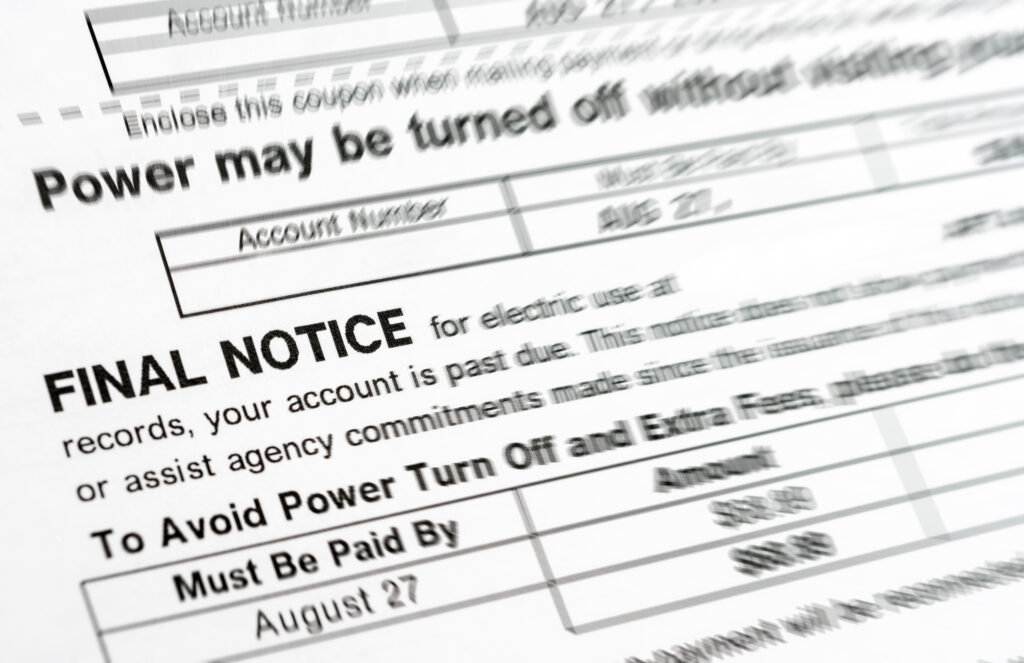One in four Americans struggle to pay their energy bills or are forced to make tradeoffs to keep their lights and air conditioners on, such as going without food or medicine. (Getty Images)
Many states across the country protect utility customers from having their electricity shut-off during extreme heat. Indiana is not one of them.
With temperatures forecasted this summer to be well above normal, it is imperative that the General Assembly and Indiana Utility Regulatory Commission take immediate steps to protect Hoosiers from losing access to the energy they need to maintain safe and comfortable temperatures in their homes.
One in four Americans struggle to pay their energy bills or are forced to make tradeoffs to keep their lights and air conditioners on, such as going without food or medicine. This type of energy insecurity is an under-appreciated and under-reported form of material hardship, and research shows that it is disproportionately experienced by people with low-incomes, people of color, families with children, and those who are medically vulnerable.
For thousands of Hoosiers, the struggle to pay their utility bills may result in losing access to energy services altogether. Last summer alone (during the months of June, July and August), Indiana’s five investor-owned electric utilities – AES Indiana, CenterPoint, Duke, Indiana Michigan Power, and NIPSCO – collectively disconnected the service of more than 50,000 customers because of nonpayment. These data come from the Energy Justice Lab’s Utility Disconnections Dashboard, and they are based on monthly reports from the utilities themselves.
During the summer, losing access to electricity can mean living in unsafe temperatures, and, in some cases, it can be deadly. According to data from the U.S. Centers for Disease Control and Prevention, about 1,200 people are killed by extreme heat each year. Often, heat-induced death comes from outdoor heat exposure, but people also experience it in their homes, especially during periods of extended hot temperatures that persist through nighttime hours.
Options to help
Customers who fall behind on their bills have many options to avoid shut-offs. For example, most utilities offer payment plans and the federal government offers some financial assistance to eligible customers through the Low Income Home Energy Assistance Program (LIHEAP). Many people also find other ways to cope, such as asking family and friends, faith-based organizations, or others for help, or by seeking a loan from a bank or a payday lender.
For their part, utilities often assert that disconnecting people from service is a last resort, but an option that they must use to compel delinquent customers with adequate resources to pay what they owe.
Regardless, states have long regulated utility disconnection practices to be sure that customers have adequate notification and that people do not lose access to critical energy services during extreme weather. Historically, most states have focused their attention on limiting disconnections during the cold, winter months.
New dashboard highlights utility disconnections nationwide
Indiana has a limited policy to this effect. Utilities in Indiana, including municipal utilities and rural electric cooperatives, may not disconnect customers from service from December 1 to March 15 if they are receiving or are eligible and have applied for an energy assistance program such as LIHEAP. Policies in other states vary, but most include similar seasonal shut-off moratoria, though typically with broader eligibility.
Indiana does not have a similar policy in place for the summer. In twenty states and the District of Columbia, regulated utilities are limited in some way during hot weather from shutting off service to electricity customers. In Illinois, for example, when temperatures are forecasted to rise about 95 degrees in the next 24 hours, utilities are prohibited from disconnecting their customers.
The lack of summer protections in Indiana has not gone un-noticed. State Sen. David Vinzant, who represents Gary and other communities in Lake County, introduced Senate Bill 278 during the 2024 session of the General Assembly. This legislation would have extended Indiana’s current protections to June 21 through September 23 to protect Hoosiers from shut-offs during the hot summer months. Unfortunately, the bill did not advance.
The bill would have provided a straightforward extension of current protections, and guaranteed Hoosiers at least some protections from shutoffs during periods of dangerous hot temperatures. A more comprehensive approach would broaden the eligibility criteria. The Indiana Utility Regulatory Commission should also consider ways to use its authorities to provide similar protections. All Hoosiers, regardless of their income or any other factor, should be protected from losing access to the energy they need to stay safe during extreme weather.
GET THE MORNING HEADLINES DELIVERED TO YOUR INBOX
The post Indiana should protect customers from utility shut-offs during extreme heat appeared first on Indiana Capital Chronicle.

